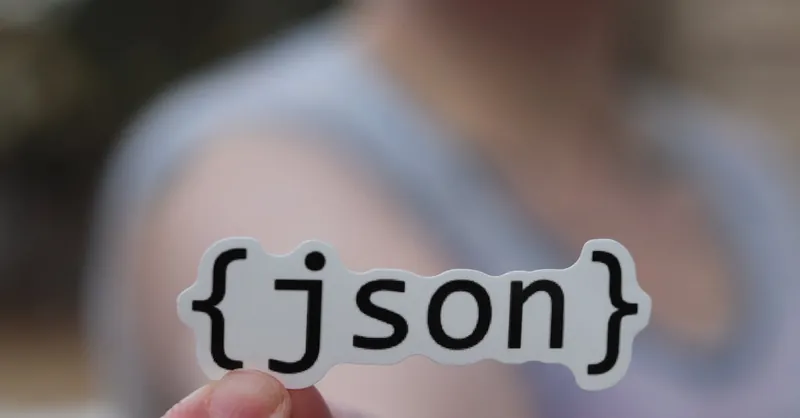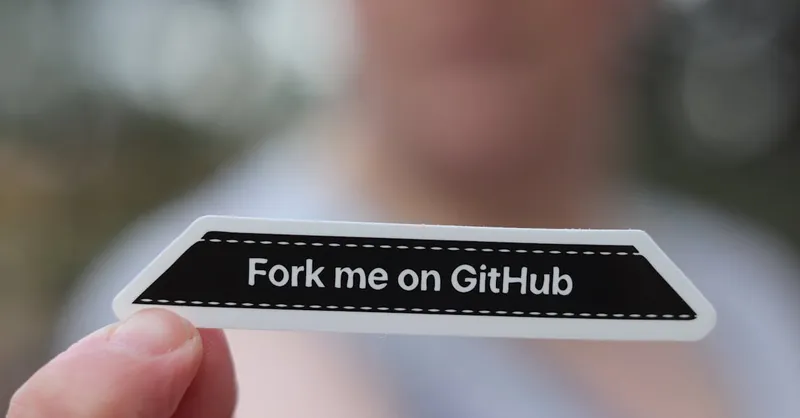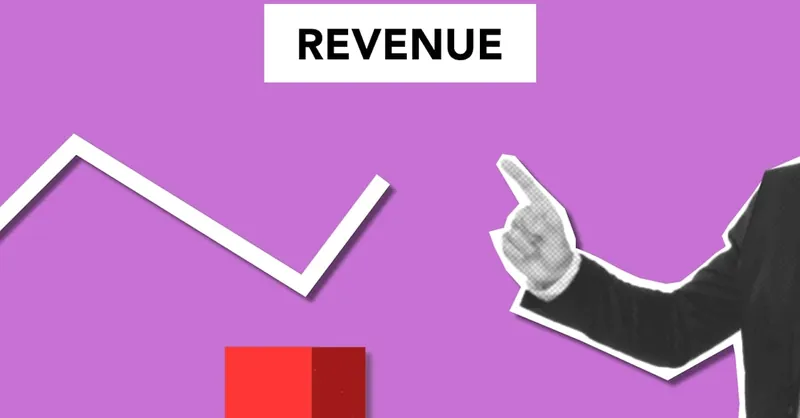Monetize Your Programming Skills: Creative Passive Income Ideas
Category: Programming
Unlocking Passive Income by Monetizing Your Programming Skills
If you've landed here, you're a programmer or tech-savvy individual looking to turn your coding talent into a steady stream of passive income. Maybe you've tried freelancing or full-time jobs but want to explore smarter, scalable ways to generate revenue without trading hours for dollars. You understand the value of programming but struggle with transforming your skills into lasting income that doesn’t require constant active work.
This blog post is crafted specifically for developers like you who want innovative, creative strategies to monetize programming expertise beyond the typical gigs. We'll walk through practical avenues—from building SaaS products to automating workflows, developing niche mobile apps, creating APIs, or leveraging open-source contributions for revenue. My aim is to provide actionable insights rather than generic advice, helping you identify passive income paths aligned with your interests and skills.
By the end of this deep dive, you'll have a clear understanding of multiple proven methods and emerging opportunities that can turn your code into cash-generating assets. If you’re ready to explore programming as a source of passive income — not just active work — keep reading to discover how you can pivot from coder to creator-entrepreneur with long-term earning potential.
- Unlocking Passive Income by Monetizing Your Programming Skills
- Identifying Your Programming Strengths and Passive Income Goals: Mapping Your Skills to Viable Income Streams
- Building and Selling Niche SaaS Applications: How Small, Targeted Software Services Create Recurring Revenue
- Creating and Monetizing Mobile Apps: Strategies for App Store Success and In-App Monetization
- Developing APIs and Developer Tools for Monetization: Leveraging APIs as Products and Subscription Services
- Automating Business Processes and Selling Automation Scripts: Crafting Automation Tools That Save Time and Generate Income
- Leveraging Open Source Projects with Sponsorships and Premium Features: Combining Community Goodwill with Monetization
- Publishing Educational Content: Coding Courses, eBooks, and Tutorials That Create Passive Income
- Affiliate Marketing for Programmers: Recommending Tools and Services to Earn Commissions
- Generating Income from Code Marketplaces and Freelance Platforms: Selling Code Snippets, Plugins, and Templates
- Scaling with Subscription Models and Recurring Revenue Streams: How to Convert One-Time Payments into Steady Cash Flow
Identifying Your Programming Strengths and Passive Income Goals: Mapping Your Skills to Viable Income Streams
Before diving into passive income projects, the foundational step is to assess your unique programming strengths and clearly define your passive income objectives. This strategic alignment ensures that the income streams you pursue not only leverage your core competencies but also match your lifestyle and financial goals, ultimately increasing your chances of sustainable success.
Start by conducting a thorough self-inventory of your technical skills, such as specific programming languages (e.g., Python, JavaScript, Go), frameworks, and platforms where you excel. Complement this with an evaluation of your problem-solving style, creativity level, and areas of domain expertise like fintech, healthcare, or education technology. For example, if you are adept at full-stack web development and enjoy designing user-centric interfaces, creating SaaS applications or niche web tools could be lucrative passive income avenues. Conversely, if backend automation is your forte, building scripts that can be sold as plugins or automation workflows might be more fitting.
Simultaneously, clarify your passive income goals by asking:
- What is my target monthly passive income? Understanding your financial benchmark will help filter projects based on their revenue potential and effort required for maintenance.
- How much upfront time and capital can I invest? Some passive income streams demand more initial development time or marketing spend.
- What level of ongoing engagement am I willing to maintain? Some sources may require regular updates or customer support, which can affect your categorization of “passive.”
- Do I aim for scalable growth or steady, predictable returns? Scalability often comes with higher risks but greater rewards, whereas steady returns might involve smaller, diversified projects.
Mapping your programming strengths to these clear goals helps you select passive income streams with the highest probability of success—whether that’s launching a subscription-based software, building educational code libraries, or even monetizing open-source contributions creatively. This intentional approach not only enhances productivity but also positions your skills within market demands for long-term financial freedom.

Image courtesy of RDNE Stock project
Building and Selling Niche SaaS Applications: How Small, Targeted Software Services Create Recurring Revenue
One of the most effective ways to monetize your programming skills for passive income is by developing and selling niche SaaS (Software as a Service) applications. Unlike large, broad software platforms, niche SaaS solutions focus on solving highly specific problems for well-defined audiences, which drastically reduces competition and marketing noise. By targeting a narrow market segment—whether it’s specialized invoicing for freelancers, project management for small creative teams, or workflow automation for local businesses—you can create a compelling value proposition that customers are willing to pay for month after month.
The beauty of niche SaaS offerings lies in their ability to generate recurring revenue through subscription models. This revenue predictability not only stabilizes your cash flow but also allows you to scale your business sustainably by reinvesting profits into growth and product improvements. Moreover, with modern cloud platforms and APIs, launching a SaaS product requires less upfront infrastructure investment, making it accessible even for solo developers or small teams.
Why Niche SaaS Works for Passive Income Programming Projects
- Focused market fit: Lower customer acquisition costs because you address specific pain points with tailored solutions.
- Recurring subscriptions: Continuous revenue stream rather than one-time sales, creating long-term financial stability.
- Lower churn rates: Users stick around longer due to the specialized nature and dependency on your tool.
- Automated delivery and support: Technical automation and clear documentation reduce ongoing maintenance overhead.
- Scalability potential: Cloud-based platforms allow seamless user and feature scaling without exponential cost increases.
To succeed with niche SaaS, begin by identifying micro-niches that intersect your programming strengths and market demand. Conduct validation through pre-launch surveys, landing pages, or minimum viable products (MVPs) to confirm willingness to pay. Then, leverage lean development cycles and focus on delivering a minimum viable feature set that solves core problems, ensuring faster time to market and earlier revenue.
By building small, high-value SaaS tools tailored to niche audiences, programmers can transform their coding projects into reliable passive income streams with scalable, recurring revenue models—without the overwhelming complexity of massive enterprise software.

Image courtesy of Markus Spiske
Creating and Monetizing Mobile Apps: Strategies for App Store Success and In-App Monetization
Mobile app development offers a powerful avenue for programmers to generate passive income by tapping into the massive and constantly growing smartphone user base worldwide. However, creating an app alone isn’t enough—you need a clear strategy for app store success and effective in-app monetization to turn your programming efforts into a consistent revenue stream.
To start, focus on building mobile apps that solve specific user problems or entertain niche audiences, as targeted functionality improves discoverability and user retention. Whether developing for iOS, Android, or cross-platform frameworks, prioritize intuitive UI/UX, fast performance, and reliable bug-free experiences, as positive reviews and high ratings boost your app’s visibility in crowded marketplaces.
When it comes to monetization models, you have several proven options that can be combined depending on your app type and target users:
- Freemium with In-App Purchases: Offer core features for free to attract a broad user base, then unlock premium content, features, or digital goods through in-app purchases. This model balances user growth with scalable revenue.
- Subscription-Based Access: Provide ongoing value through regular content updates or services with recurring subscription fees, ensuring predictable monthly income.
- Ads and Rewarded Videos: Integrate non-intrusive ads or incentivized video ads to monetize free users without blocking app access, maximizing revenue from mass audiences.
- Paid Apps: Charge upfront for downloading your app. This model works best for specialized tools or games with clear exceptional value, though it often requires strong pre-launch marketing.
- Sponsorships and Partnerships: Collaborate with brands or affiliate programs to include sponsored content or referral links that generate commission-based earnings.
To enhance long-term passive income, automate app updates and customer support wherever possible using analytics and feedback tools, and consider using app store optimization (ASO) techniques such as keyword optimization in titles, descriptions, and localized content to improve organic traffic.
By blending your programming expertise with strategic monetization methods and focusing on niche mobile markets, you can develop mobile apps that evolve from one-time projects into scalable, passive income-generating assets—maximizing the return on your development time and creativity.

Image courtesy of Sanket Mishra
Developing APIs and Developer Tools for Monetization: Leveraging APIs as Products and Subscription Services
Building and monetizing APIs (Application Programming Interfaces) and developer tools is a highly scalable strategy to generate passive income from your programming skills. APIs have become the backbone of modern software ecosystems by enabling different applications, platforms, and devices to communicate seamlessly. This creates enormous opportunities to package your programming expertise as API products or developer-centric tools that deliver ongoing value to software teams and businesses.
Why APIs and Developer Tools Are Ideal for Passive Income
- High demand and adoption: Thousands of companies rely on third-party APIs to power functionalities like payments, authentication, data enrichment, or analytics.
- Subscription-based revenue: Most API providers use tiered subscription models with usage limits, creating recurring revenue streams.
- Low maintenance overhead: Once developed, APIs can run with minimal active management, primarily focusing on uptime and customer support.
- Scalability: Cloud services allow APIs to scale effortlessly with user growth without excessive infrastructure costs.
Strategies to Monetize Your APIs and Developer Tools
- Identify pain points in developer workflows: Create APIs or tools that solve complex or repetitive tasks efficiently—such as data validation, formatting, or integration connectors.
- Offer freemium tiers: Provide a free tier with basic functionality to attract users and convert power users to paid plans offering higher quotas or premium features.
- Publish thorough documentation and SDKs: Comprehensive docs and client libraries lower the adoption barrier and improve customer retention.
- Implement usage-based pricing: Charge based on API calls, data transfer, or feature access to align the revenue with customer value.
- Leverage marketplaces: Distribute your APIs via popular developer marketplaces like RapidAPI or cloud provider marketplaces to increase visibility.
By transforming your programming knowledge into robust API products or developer tools, you tap into a growing market of software creators looking to accelerate their projects. Consistent subscriptions and minimal day-to-day involvement make APIs a compelling source of passive income—turning your code into a valuable, recurring asset over time.

Image courtesy of RealToughCandy.com
Automating Business Processes and Selling Automation Scripts: Crafting Automation Tools That Save Time and Generate Income
One of the most powerful ways to monetize your programming skills for passive income is by creating and selling automation scripts and tools that streamline repetitive business processes. Companies and freelancers alike are constantly seeking solutions to save time, reduce errors, and increase productivity—making automation scripts highly valuable commodities in the marketplace. Whether it's automating data entry, report generation, customer follow-ups, or workflow orchestration, well-crafted scripts can turn manual, time-intensive tasks into seamless, error-free operations.
As a developer, you can leverage your expertise to design custom automation workflows or general-purpose scripts that solve common pain points. Once built, these scripts can be packaged and sold multiple times, generating passive revenue with minimal ongoing support. Key advantages of this approach include:
- High demand across industries: Automation needs span diverse sectors like e-commerce, marketing, finance, and HR, providing broad market opportunities.
- Low development cost with high value: Simple yet effective scripts offer significant ROI to buyers without requiring complex infrastructure.
- Scalable sales model: Digital distribution via marketplaces, your own website, or platforms like Gumroad allows effortless scaling without inventory constraints.
- Potential for subscription models: Offering updates, customization, or advanced features through subscription plans enhances recurring income.
- Cross-platform adaptability: Automation scripts can be developed for desktop, web, or cloud environments, broadening your target audience.
To maximize success, focus on identifying repetitive, time-consuming tasks within niche markets and tailor your automation scripts to provide intuitive, user-friendly solutions. Accompanying your scripts with clear documentation, tutorials, or video walkthroughs drives adoption and reduces support queries. Additionally, consider integrating your automation products with popular tools via APIs or extensions to enhance their value proposition.
By transforming your programming skills into business process automation tools, you not only help clients achieve operational efficiency but also create scalable digital assets that consistently generate passive income—turning your coding solutions into valuable, money-making instruments that work for you around the clock.

Image courtesy of olia danilevich
Leveraging Open Source Projects with Sponsorships and Premium Features: Combining Community Goodwill with Monetization
Open source projects present a unique and rewarding avenue for programmers to generate passive income while contributing to the developer community. By sharing your code openly, you build goodwill, expand your network, and establish yourself as an authority in your niche. However, monetizing open source effectively requires a strategic blend of community engagement and value-added offerings that go beyond the free codebase.
How to Monetize Open Source Projects
- Sponsorships and Donations: Platforms like GitHub Sponsors, Open Collective, and Patreon allow enthusiastic users and organizations to financially support your work. Encouraging sponsorships taps into community goodwill and recurring revenue from supporters who value your contributions.
- Premium Features or Add-Ons: Offer a free core project complemented by premium extensions, plugins, or advanced features that users can purchase. This dual model keeps your project accessible while creating a scalable income stream from power users.
- Commercial Licenses: While providing the project under an open source license, consider offering paid commercial licenses with additional guarantees, support, or customization options for businesses using your software.
- Paid Support and Consulting: Leverage your project’s credibility to offer prioritized support, integration services, or consulting, which can be packaged as subscription services or one-off contracts.
- Exclusive Content and Tutorials: Develop specialized guides, video courses, or workshops tied to your open source project and monetize access via memberships or course platforms.
Benefits of Combining Open Source and Monetization
- Community trust and widespread adoption: Open source transparency builds a loyal user base that often converts into paying customers.
- Organic growth and visibility: Contributions, forks, and discussions naturally increase project awareness without heavy marketing costs.
- Sustainable income alongside passion projects: You can maintain your open source work while generating revenue, turning volunteer efforts into professional growth opportunities.
- Positive brand reputation: Being recognized as a helpful, community-driven developer enhances your professional brand and future income potential.
By strategically blending open source contribution with sponsorships and premium offerings, you create a powerful synergy that not only fuels your passive income but also fosters a thriving developer ecosystem around your projects. This approach enables programmers to monetize their skills impactfully without alienating the community ethos that makes open source so valuable.

Image courtesy of RealToughCandy.com
Publishing Educational Content: Coding Courses, eBooks, and Tutorials That Create Passive Income
One of the most rewarding and scalable ways to monetize your programming skills is by creating and publishing educational content such as coding courses, eBooks, and tutorials. With the ever-growing demand for high-quality programming education, developers who package their expertise into accessible learning materials can generate long-term passive income streams while helping others level up their skills.
Why Educational Content Generates Passive Income for Programmers
- High demand for learning resources: From beginners to advanced developers, millions worldwide constantly seek structured programming knowledge across languages, frameworks, and specialized topics.
- One-time creation, continuous sales: Once your course, eBook, or tutorial is published, it can be sold repeatedly without significant ongoing effort, converting your initial work into a steady revenue source.
- Multiple monetization channels: Platforms like Udemy, Coursera, Gumroad, or your own website provide diverse ways to distribute and monetize content, including subscription models, one-time purchases, or memberships.
- Evergreen content potential: Core programming concepts, best practices, and problem-solving methods rarely lose relevance, enabling your materials to attract learners over time.
- Authority and brand building: Educational content positions you as an expert in your niche, unlocking further income opportunities such as consulting, speaking, or sponsored collaborations.
Effective Strategies to Maximize Passive Income from Educational Content
- Identify your niche and target audience: Focus on specific programming topics where you have deep expertise and can address clear pain points or skill gaps.
- Develop high-quality, structured content: Combine clear explanations, real-world examples, and practical exercises to create engaging, valuable learning experiences.
- Leverage multiple formats: Complement written tutorials with video lessons, downloadable code samples, and quizzes to appeal to diverse learning preferences.
- Optimize for discoverability and SEO: Use keyword-rich titles, descriptions, and metadata to improve your content’s visibility on search engines and educational platforms.
- Build a community around your content: Encourage learner interaction via forums, social media groups, or newsletters to increase engagement and encourage repeat sales or referrals.
- Update content regularly: Refresh your courses or eBooks to reflect the latest programming trends and technologies, maintaining relevance and attracting ongoing buyers.
By transforming your programming knowledge into valuable educational products, you not only create scalable passive income but also empower others to succeed in coding. This approach leverages your expertise into a digital asset that generates revenue 24/7, making educational publishing one of the most sustainable and fulfilling pathways for programmers seeking financial independence.

Image courtesy of olia danilevich
Affiliate Marketing for Programmers: Recommending Tools and Services to Earn Commissions
Affiliate marketing is an excellent passive income strategy for programmers because it leverages your technical expertise and industry authority to recommend high-quality tools, software, and services to your audience. By sharing honest reviews, tutorials, or use cases of products you trust, you can earn commissions on referrals while providing real value to your developer community or tech-savvy network.
Why Affiliate Marketing Works Well for Programmers
- Built-in credibility: Your programming background and firsthand experience with development tools establish trust, increasing the likelihood that readers will follow your recommendations.
- Low upfront investment: Unlike product creation, affiliate marketing requires minimal time beyond content creation and audience building, making it a cost-effective passive income source.
- Diverse monetization potential: You can promote a wide variety of products, including code editors, cloud hosting, APIs, SaaS platforms, developer courses, and even hardware.
- Recurring commissions: Many software and platform affiliates offer subscription-based plans, enabling you to earn ongoing revenue from referred customers.
- SEO-friendly content opportunities: Creating detailed tutorials, comparison guides, or “best of” lists optimized for relevant keywords attracts organic traffic eager for solutions.
How to Maximize Affiliate Income as a Programmer
- Choose affiliate programs relevant to your niche: Focus on tools and services that align with your programming specialty or audience interests—such as DevOps platforms, IDEs, or learning portals.
- Create high-quality, SEO-optimized content: Develop comprehensive blog posts, video walkthroughs, or newsletters that showcase real-world applications and benefits of the products you endorse.
- Disclose affiliate relationships transparently: Build trust by clearly stating affiliate links while highlighting the genuine value to your readers.
- Leverage multiple channels: Promote affiliate links not only on your blog but also through social media, coding forums, and email marketing to expand reach.
- Track performance and optimize: Use analytics to monitor which content and referral sources generate the most commissions, then refine your content strategy accordingly.
By integrating affiliate marketing into your programming blog or digital presence, you can transform your recommendations into a consistent passive income stream. This method capitalizes on your existing expertise and audience connections, making it a sustainable and scalable way to monetize programming skills with minimal ongoing effort.

Image courtesy of Ofspace LLC, Culture
Generating Income from Code Marketplaces and Freelance Platforms: Selling Code Snippets, Plugins, and Templates
Expanding your passive income opportunities as a programmer involves tapping into code marketplaces and freelance platforms that specialize in buying and selling reusable programming assets. These platforms provide a ready-made audience actively seeking code snippets, plugins, themes, and templates that speed up development or add value to projects. By packaging your coding solutions into modular, easy-to-deploy components, you can generate income repeatedly with minimal ongoing effort—transforming your work into scalable digital products.
Why Selling Code on Marketplaces and Platforms Works for Passive Income
- Access to an established customer base: Sites like CodeCanyon, GitHub Marketplace, and Envato have millions of users looking for reliable, ready-made coding assets.
- Low barrier to entry: You don’t need to build full applications; smaller, reusable code units like WordPress plugins, JavaScript libraries, or UI templates can sell well.
- Recurring revenue through updates and add-ons: Offering premium updates, support plans, or complementary add-ons increases customer lifetime value.
- Global reach with automated sales: Once published, your code products can be purchased worldwide 24/7 without your active involvement.
- Portfolio building and credibility: Successful listings boost your professional reputation, attracting higher-value freelance offers or consulting gigs.
Top Strategies for Maximizing Income from Code Marketplaces and Freelance Platforms
- Identify high-demand niches: Research trending programming needs such as e-commerce plugins, API integration tools, UI component libraries, or automation snippets that developers frequently seek.
- Create clean, well-documented code: Clear instructions and easy customization options improve buyer satisfaction and reduce support queries, enhancing your product’s reputation.
- Price competitively while considering quality: Balance affordability with value perception, and consider tiered pricing or licensing models for broader appeal.
- Regularly update and improve your offerings: Keep your code compatible with the latest platform versions and respond to user feedback to maintain positive reviews and rankings.
- Promote your products externally: Utilize social media, developer forums, and your blog to drive targeted traffic and increase sales beyond the marketplace’s organic reach.
By focusing on selling code snippets, plugins, and templates through popular code marketplaces and freelance platforms, you convert your programming skills into passive revenue-generating assets. This approach not only leverages your technical strengths but also fits seamlessly with scalable, low-maintenance business models—enabling you to grow multiple income streams from your programming expertise.

Image courtesy of Myburgh Roux
Scaling with Subscription Models and Recurring Revenue Streams: How to Convert One-Time Payments into Steady Cash Flow
Transitioning from one-time sales to subscription models is a critical step in creating scalable, predictable passive income from your programming projects. Unlike single purchases that generate revenue spikes, subscription-based offerings provide a continuous cash flow, which helps stabilize your income and fuels sustainable growth. This approach is especially effective for software products, APIs, educational platforms, or automation services where ongoing access, updates, and support add significant value over time.
Why Subscription Models Enhance Passive Income for Programmers
- Predictable monthly or annual revenue drastically improves cash flow management and planning.
- Higher customer lifetime value (LTV): Subscribers tend to generate more revenue per user over time compared to one-off buyers.
- Incentivizes continual product improvement: Recurring revenue justifies regular feature updates, bug fixes, and customer support, increasing user retention.
- Reduces reliance on constant new customer acquisition: Retaining existing subscribers is more cost-effective than repeatedly seeking new buyers.
- Builds brand loyalty and community engagement: Subscription users often form a dedicated user base that provides valuable feedback and advocacy.
Practical Strategies for Converting One-Time Customers into Subscribers
- Introduce Tiered Subscription Plans: Offer multiple subscription levels with varying features, usage limits, or support priorities to match different user needs and maximize conversions.
- Offer Free Trials or Freemium Versions: Allow users to experience core functionality risk-free before committing to a paid subscription, lowering barriers and boosting sign-ups.
- Bundle Value-Added Services: Combine your core product with exclusive content, premium support, or automation features to make recurring fees more attractive.
- Automate Billing and Account Management: Use payment platforms like Stripe or PayPal with subscription management to streamline renewals and reduce churn from manual processes.
- Communicate Regularly with Subscribers: Provide updates, tips, and new feature announcements via email or in-app messaging to reinforce ongoing value and minimize cancellations.
By implementing these strategies, you can effectively shift from sporadic sales to steady recurring revenue streams that grow organically. This not only maximizes the lifetime earnings from each customer but also transforms your programming projects into sustainable businesses—empowering you to enjoy long-term passive income with less hands-on management.

Image courtesy of Monstera Production
